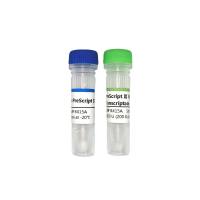In Situ Reverse Transcription PCR on Plant Tissues
互联网
847
In situ detection techniques allow specific nucleic acid sequences to be exposed in morphologically preserved tissue sections. In combination with immunocytochemistry, in situ detection can relate microscopic topological information to gene activity at the transcript or protein levels in specific tissues. The advantage of in situ methods over the conventional techniques (e.g., Northern blot, reverse transcription polymerase chain reaction [RT-PCR], or real-time PCR) is that they allow the investigatation of the putative spatial distribution of nucleic acid products activity in a heterogeneous cell population. In this chapter, we describe a protocol for in situ RT-PCR detection of specific messenger RNA in cucumber (Cucumis sativus ), although this protocol can be used for any plant species, floral buds, and somatic embryo tissue sections on glass microscope slides. A successful in situ RT-PCR procedure requires the optimization of many conditions related to the tissue types used, for example, a cell’s age, size, and composition, which may influence the detection of RT-PCR products, as well as specific transcript availability. Moreover, parameters, such as the fixation time, thermal cycling set-up, and the time of detection of RT-PCR products, also should be optimized. The importance of the other factors also is estimated in the protocol. In addition several types of controls that are necessary for a trustworthy in situ RT-PCR method are being discussed.









